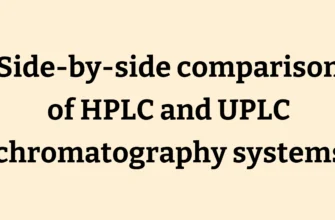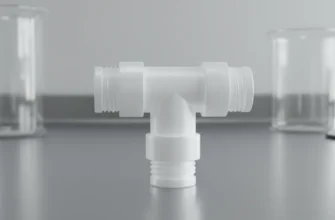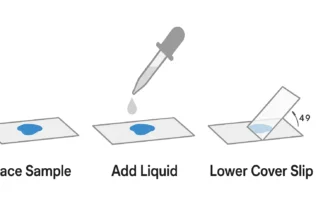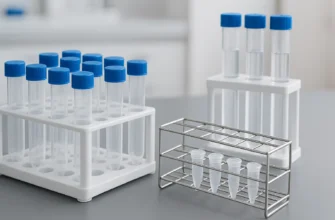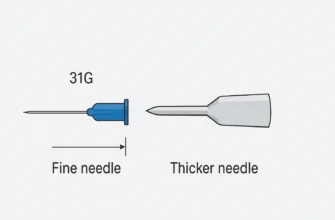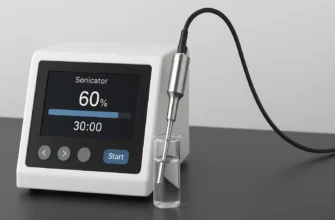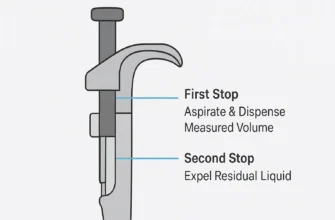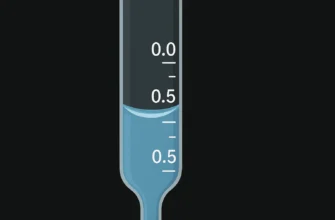Essential Guide to Choosing the Right Pipette Filler
Key Highlights
A pipette filler is an essential tool for safe and efficient liquid handling in the laboratory. It functions by creating a vacuum to draw liquid into a pipette, replacing the hazardous practice of mouth pipetting, which was banned in the late 1970s for safety reasons. The main types are manual pipette fillers (including rubber bulb and mechanical controllers) and electronic pipette controllers. Electronic pipette controllers offer high precision, adjustable speeds, ergonomic design, and better repeatability. Choosing the right device depends on your application, required volume range, frequency of use, and precision requirements. Key features include universal adapters, speed controls, hydrophobic safety filters, and battery life indicators.
Introduction
In any laboratory, precise and efficient liquid handling is fundamental to achieving accurate results. Pipettes and their accessories are at the heart of these tasks. While a pipette measures the liquid, a pipette filler is the indispensable tool that helps you draw and dispense it safely and efficiently. This ergonomic device not only speeds up your workflow but also reduces physical strain and repetitive strain injuries. This guide will walk you through everything you need to know about choosing the perfect pipette filler for your laboratory needs.
Understanding Pipette Fillers in Laboratory Settings
A pipette filler, also known as a pipette controller or pipette aid, is a handheld device that simplifies the process of aspirating and dispensing liquids with serological or volumetric pipettes. It was developed as a crucial safety advancement to replace the hazardous practice of mouth pipetting, which was officially prohibited by federal regulations in the late 1970s due to numerous laboratory-acquired infections.
These tools are now standard in modern laboratories, improving the accuracy, safety, and comfort of liquid handling operations. To select the best one for your needs, it’s important to understand exactly what they do and how they differ from the pipettes they are used with.
What Is a Pipette Filler and How Does It Function?
A pipette filler is a precise liquid handling device designed to help you safely draw liquids into a pipette. Instead of using your mouth, which is a dangerous and federally prohibited practice, the filler attaches to the top of a glass or plastic pipette and does the work for you.
The device works by creating vacuum pressure. In manual models, squeezing a bulb or pressing valves creates suction. In electronic models, pressing trigger buttons activates a small, motorized pump, which generates controlled vacuum pressure to aspirate liquid into the pipette. Pressing the dispense trigger reverses the process, allowing you to dispense the liquid with precise control.
This mechanism gives you precise control over your liquid handling tasks. Electronic models make aspirating and dispensing smoother, faster, and far more accurate than manual methods, helping to prevent errors and reduce user fatigue.
Differences Between Pipettes and Pipette Fillers
It’s important to understand that pipettes and pipette fillers have distinct functions. A pipette is the primary instrument used for measuring and transferring liquid. There are two main types:
Volumetric pipettes are calibrated to deliver one specific, highly accurate volume (e.g., 1, 5, 10 mL) and are designed for “to deliver” (TD) measurements where liquid drains naturally by gravity. These are used primarily in analytical chemistry for titrations and preparing standard solutions.
Serological pipettes are graduated pipettes calibrated for “blow-out” dispensing, meaning the residual droplet at the tip must be expelled to ensure complete transfer. They feature graduated scales for continuous dispensing (e.g., 0.1–10 mL range) with typical accuracy of ±2%.
A pipette filler or pipette controller is an accessory that assists in the liquid handling process. It doesn’t measure the liquid itself; instead, it provides the automated suction and dispensing force needed to move liquid into and out of the pipette. Think of it as the engine that powers the pipetting action.
Popular Types of Pipette Fillers
When shopping for a pipette filler, you’ll find three main categories: manual rubber bulbs, mechanical manual fillers, and electronic controllers. Each type has its own set of uses, features, and benefits.
Manual Rubber Bulb Pipette Fillers: Uses and Safety
The manual rubber bulb pipette filler is the most basic type of pipette aid. Made from natural rubber or silicone, its primary purpose is to provide a safe alternative to mouth pipetting.
Using one requires practice to master. You attach the bulb securely to the top of the pipette, then use three valves (typically labeled A, S, and E) to control air flow, suction, and dispensing. For safe and effective use:
-
Attach the bulb firmly to the pipette before immersing the tip in the liquid
-
Press valve “A” while squeezing the bulb to expel air
-
Press valve “S” to aspirate liquid into the pipette
-
Press valve “E” to dispense the liquid slowly and with control
-
Never draw liquid into the bulb itself to avoid contamination
Electronic Pipette Controllers: Features and Benefits
Electronic pipette controllers bring automation and high precision to liquid handling tasks. These modern devices are powered by rechargeable lithium-ion batteries, offering cordless freedom to move around the lab. One of their biggest advantages is adjustable pump speed, which gives you complete control over aspiration and dispensing rates.
Key features of modern electronic controllers include:
-
Speed control: Multiple speed settings (typically 6-8 levels) for different applications
-
Universal adapters: Silicon collet adapters with internal knurling that securely hold pipettes from 0.1-100 mL
-
Hydrophobic filters: 0.2-0.45 μm PTFE filters prevent contamination and protect the instrument
-
Battery indicators: LED displays showing charge status and remaining battery life
-
Ergonomic design: Lightweight (typically 180-240g) with comfortable finger triggers
-
Multiple dispensing modes: Both gravity and motorized dispensing options
-
Long battery life: 8-15 hours of continuous operation per charge
This level of control significantly reduces physical effort compared to manual fillers, minimizing hand fatigue during long pipetting sessions and reducing the risk of repetitive strain injuries.
Key Criteria for Selecting the Right Pipette Filler
Selecting the ideal pipette filler requires considering several key factors that will impact your laboratory’s efficiency, safety, and precision.
Essential Features to Look for in a Pipette Filler
When evaluating a pipette controller, certain features can make a significant difference in performance and ease of use:
Universal silicon collet adapter: Look for one with internal knurling that securely holds pipettes of various sizes, typically from 0.1 mL to 100 mL. This ensures compatibility with both serological and volumetric pipettes.
Speed control: Adjustable aspiration and dispensing speeds allow you to match the controller to your specific application needs. Electronic models typically offer 6-8 speed settings.
Safety and convenience features:
-
Hydrophobic filter: 0.2-0.45 μm PTFE membrane prevents aerosols and liquid contamination from entering the instrument
-
Ergonomic design: Lightweight construction (under 250g) reduces hand fatigue during prolonged use
-
Battery indicator: LED lights signal low battery or charging status
-
Gravity dispense mode: Allows for drop-by-drop dispensing for maximum accuracy
-
Autoclavable components: Key parts like collet assemblies should be autoclavable
Compatibility with Serological and Volumetric Pipettes
The best pipette fillers are compatible with a wide range of both serological and volumetric pipettes. Modern electronic controllers with universal adapters can accommodate pipettes from major manufacturers, typically handling volumes from 0.1 mL to 100 mL.
This versatility ensures you can perform various tasks with a single instrument, from preparing media with large serological pipettes to making precise dilutions with smaller volumetric ones. Always verify the manufacturer’s specifications to confirm compatibility with your most frequently used pipettes.
Cost Considerations
Manual pipette fillers typically cost $20-$50, making them budget-friendly options for small laboratories or educational settings. Electronic pipette controllers range from $200-$600, with premium models offering advanced features like digital displays, multiple speed settings, and longer battery life.
While electronic models have higher upfront costs, they provide significant value through reduced user fatigue, improved precision, and increased productivity in high-throughput environments.
Leading Brands and Where to Purchase
Quality pipette fillers are available from reputable laboratory supply companies and manufacturers. Notable brands include:
-
Microlit: Known for innovative products like the EASYFILL and EASYAID series with advanced features like force touch technology
-
Thermo Scientific: Offers the S1 series with long battery life and ergonomic design
-
Drummond: Features self-locking dual-layer filters for enhanced safety
-
Socorex: Provides both manual and electronic Profiller series
These products can be purchased through major scientific distributors or directly from manufacturers’ websites.
Maintenance and Safety Guidelines
Proper maintenance ensures optimal performance and longevity:
-
Cleaning: Wipe the exterior with a soft, damp cloth
-
Filter replacement: Replace hydrophobic filters when they become wet or contaminated to prevent internal damage
-
Battery care: For electronic models, charge fully before first use and avoid leaving plugged in when not charging to prevent battery conditioning issues
-
Storage: Store in a clean, dry environment and use provided stands when available
Conclusion
Choosing the right pipette filler is crucial for ensuring accuracy, safety, and efficiency in your laboratory work. Understanding the differences between manual and electronic models, considering compatibility requirements, and evaluating essential features will help you make an informed decision. Whether you opt for a basic manual rubber bulb or an advanced electronic controller with digital displays and multiple speed settings, investing in quality pipetting aids not only improves your lab’s productivity but also ensures the safety of laboratory personnel and the reliability of experimental results.
The transition from dangerous mouth pipetting practices to modern, sophisticated pipette controllers represents one of the most important safety advances in laboratory science. Today’s electronic controllers offer unprecedented precision, comfort, and safety features that make them indispensable tools in modern laboratories.
Frequently Asked Questions
How Do You Clean and Maintain Pipette Fillers?
To maintain your pipette filler, wipe the exterior with a soft, damp cloth. For electronic pipette controllers, regularly check and replace the hydrophobic filter if it becomes wet or contaminated to prevent internal damage. Always follow the manufacturer’s specific cleaning instructions, especially for disassembly, to ensure your device continues to function correctly.
Can Pipette Fillers Handle Large Volumes Like 25 mL?
Yes, most modern pipette controllers are designed to handle wide volume ranges, easily accommodating large volumes like 25 mL and often up to 100 mL. Electronic models with powerful motors and secure universal adapters make them suitable for use with large-capacity pipettes, ensuring efficient and accurate liquid transfers. High-end models can fill a 25 mL pipette in as little as 3-7 seconds.
Where Can You Buy Quality Pipette Fillers?
You can purchase quality pipette fillers from reputable laboratory supply companies and directly from manufacturers. Brands like Microlit, Thermo Scientific, Drummond, and Socorex are known for producing reliable instruments that deliver consistent results and high precision. Check their websites or contact major scientific distributors to find the most suitable electronic pipette controller for your laboratory needs.


